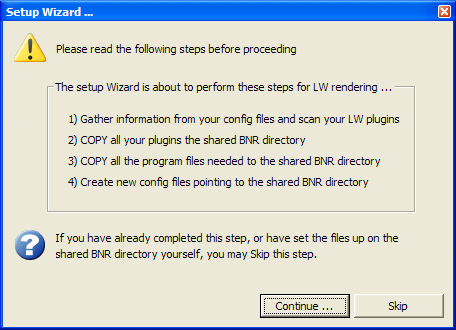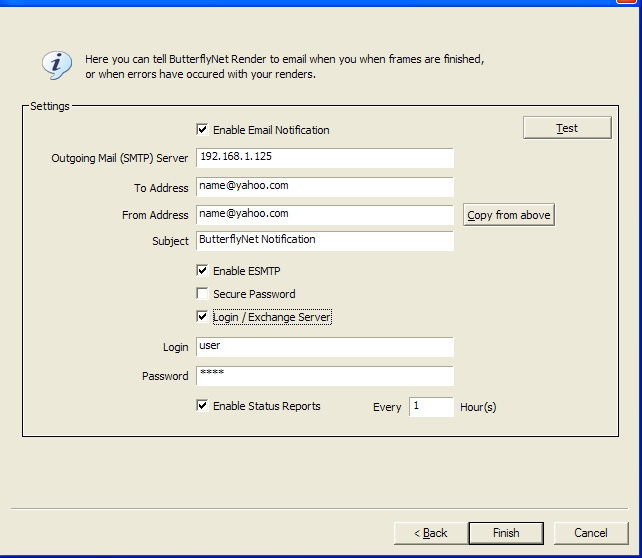Modo
The overall process of setting up Modo with ButterflyNetRender is very easy with the Setup Wizard
Contents
Install:
(Windows):
- 1. Install Modo on the Controller machine.
(OSX):
- 1. Install Modo locally on the OSX Rendernode machines.
- 2. In the BNR OSX Client - set the install path location (The OSX Clients store the platforms paths - where the Windows Controller stores only the Windows Platform paths)
- 3. Setup the POSIX path matching in the Windows Controller (see POSIX path matching section)
A few things to remember:
1. Spaces in filenames and paths can cause issues - so use 'underscores' instead
2. Make sure your assets are located on the Shared Network drives - so all the machines can access the files: IE: Use the Modo bundle feature to make sure the assets are with the scene for network rendering
3. You can check the 'Objects' tab to make sure all the assets can be located
4. Check the 'Scene Trace Logs' folder for the 'render*.txt' outputs (right click on the scene to find the folder path)
Configure:
Configure paths and settings in BNR Controller:
In the BNR Controller:
- 1 Now you can Run the BNR Controller Wizard (Options->Setup Wizard) - or when you first start BNR. You will be prompted to set the platform - make sure you select 'Modo'
- 2. Next you will be prompted to use the wizard select 'Continue'
- 3. Now set up the paths to the Modo folder and network/shared content location.
The Copy and Modify Plug Paths will copy and rewrite the configuration files as well as copy the LightWave plugins that will be used for the render farm (this may take some time).
NOTE: Make sure the 'BNR Shared Network Directory' is already created on a File Server and that this folder will be accessible by all the RenderNodes.
- 5. Next all the Modo programs and support files will be copied.
- 6. Now you can confirm the Paths the Wizard created are correct.
And set or change any of the Modo settings (should not be required). You can change these settings later by using the (Options->Configure Platforms) menu in the BNR Controller.
- 7. Next set up the shared directories, again make sure these are specified as full network address.
NOTE: If you have selected Maya or other Render types, then after this screen you will also see dialog boxes to configure these platforms also.
- 8. (For all version except the PE version of BNR - The last screen of the Wizard is the Email Setup) Ensure you use the SMTP address that your e-mail system uses.
Use the test feature to confirm that it works. If your SMTP Server requires a Login - use the 'Enable ESMTP' option. Enable Status Reports - The report lists basic render node and scene information.
- 9. If running OSX Rendernode - you will need to setup the POSIX path matchine (Options->Configure Directories - OSX POSIX Path Matching)
This is used to match the Windows and OSX paths
Restart:
Restart the BNR Controller.
Add:
Now add Modo Scene file for rendering: NOTE: make sure you add the scene from the Shared Network folder (that all the rendernodes have access to - otherwise the rendernodes will not be able to load the scene)
After you add the scene - you can check the output images and enable or disable different layers:
Test:
The best way to test a new Modo setup:
- 1. Add a Modo scene into BNR
- 2. Select the 'Render' Tab
- 3. Press the 'Test Render Command" and then press 'Launch Locally'
This will run the same command the Rendernodes will get - but you will get to see more information directly.
You will need to check the 'Task Manager' to see if the command is running in the back ground
- Right click on the Scene and a select "Open Scene Trace Log folder" and you should find the output text "Render_*.txt" - Please open with notepad to view the text.
(note if you see *.csv files - these are BNR Controller state flows)


